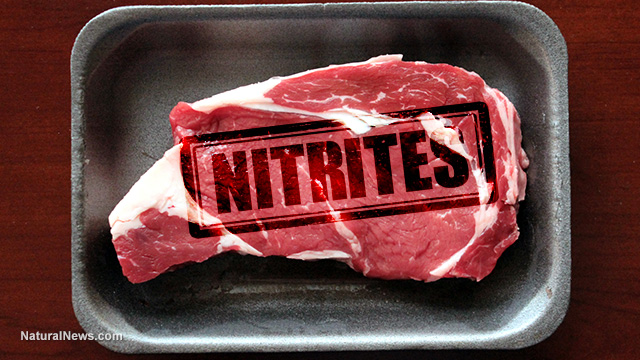Johnson & Johnson facing class action suit over the asbestos in its talc products
02/27/2018 / By Jhoanna Robinson

New Brunswick, New Jersey-based pharmaceutical and consumer packaged goods manufacturer Johnson & Johnson is facing its first investor class action lawsuit.
According to a legal complaint filed in the United States District Court for the District of New Jersey on Thursday, February 8, investors suffered from losses when the price of Johnson & Johnson’s stock plummeted after reports went public that the company knew decades ago that its talc products contained asbestos fibers that could cause cancer.
Johnson & Johnson is currently under hot water as it is facing thousands of consumer lawsuits over the alleged link between its talcum products – even baby powder – and ovarian cancer and mesothelioma. As of its last quarterly filing, Johnson & Johnson is facing around 5,500 lawsuits.
One of these lawsuits was lodged by Tina Herford in Los Angeles, alleging that the company’s talcum powders can cause mesothelioma due to it being tinged with asbestos. Johnson & Johnson won in the Hertford case in November 2017.
Investors are saying the company lied about the decades-old link by insisting that their talc products are were asbestos-free and safe. (Related: Johnson & Johnson to pay $2.2 billion for making false marketing claims and engaging in kickbacks.)
Johnson & Johnson’s vice president of media relations Ernie Knewitz said the lawsuit was “baseless” and that other allegations concerning asbestos were “soundly rejected by a California jury in November 2017.”
“Johnson’s Baby Powder does not contain asbestos or cause mesothelioma or ovarian cancer, and we are confident that our talc products are, and always have been, free of asbestos, based on decades of monitoring, testing, and regulation dating back to the 1970s.
100% organic essential oil sets now available for your home and personal care, including Rosemary, Oregano, Eucalyptus, Tea Tree, Clary Sage and more, all 100% organic and laboratory tested for safety. A multitude of uses, from stress reduction to topical first aid. See the complete listing here, and help support this news site.
Sample testing by independent laboratories, independent scientists, governmental agencies, and academic institutions spanning decades have all confirmed the absence of asbestos in our talc products,” Knewitz said.
The investors’ accusations are taken from a document that was revealed during one of the consumer lawsuits. According to the complaint, the document revealed that Johnson & Johnson marketed its talc products as asbestos-free even with the knowledge during the 1970s that asbestos might have been present in some of its talc mines.
The new shareholder lawsuit, which was filed by Frank Hall on behalf of the other investors who purchased Johnson & Johnson shares between February 2013 and February 2018 claimed that Johnson & Johnson “has known for decades that its talc products, such as its Baby Powder, include asbestos fibers and that the exposure to those fibers can cause ovarian cancer and mesothelioma.”
The lawsuit claimed that in a 1973 memo titled WINDSOR MINERALS AND TALC, a Johnson & Johnson employee wrote, “We believe this mine to be very clean; however, we are also confident that fiber forming or fiber type minerals could be found.”
The employee added that the talcs used in the packaging materials “contain widely varying amounts of tremolite or fibrous talc,” and suggested that they replace talc with corn starch.
Johnson & Johnson stock dipped to $2.28 per share after Bloomberg blew wide open the report in September 2017, according to the complaint.
Asbestos in cosmetics
According to study, asbestos fibers present in cosmetic products such as talcum powder have “the potential to be released into the air and inhaled during normal personal talcum powder application.” Inhaling asbestos fibers can affect the lungs and lymph nodes, which can develop into a variety of health conditions, including lung fibrosis, ovarian cancer, and mesothelioma.
Stay up-to-date with the latest news on cosmetics and their health risks at Cosmetics.news.
Sources include:
Tagged Under: asbestos, consumer products, Cosmetics, dangers of cosmetics, ingredients, Johnson & Johnson, mesothelioma, Ovarian Cancer, Personal care products, talcum powder, toxic chemicals, toxins




















